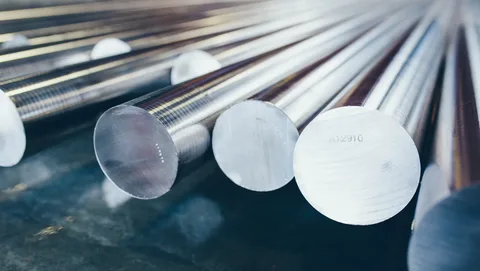Superalloys, a class of high-performance materials, have revolutionized the engineering world with their extraordinary properties. From aerospace to medical applications, these advanced materials have become indispensable. This article explores why engineers consistently turn to the magic of superalloys for superior performance, focusing on their unique attributes, applications, and transformative potential.
Unmatched Strength and Durability
Superalloys are synonymous with exceptional strength and durability, making them the material of choice for critical applications. These alloys, primarily composed of nickel, cobalt, or iron, maintain their structural integrity even under extreme conditions. Their unique crystalline structures resist deformation, enabling them to withstand immense mechanical stresses. Engineers rely on this robustness to design components that endure high loads, vibrations, and prolonged use without failure.
What truly underscores the magic of superalloys is their resilience in the face of wear and tear. They are engineered to resist fatigue and cracking, ensuring longevity in demanding environments. From jet engines to power plants, the strength of superalloys translates into reduced maintenance and improved efficiency, making them a cornerstone of modern engineering.
Exceptional Heat Resistance
One of the most celebrated properties of superalloys is their ability to perform at extreme temperatures. Unlike conventional materials that weaken when exposed to high heat, superalloys retain their mechanical properties in conditions exceeding 1,000°C. This heat resistance is attributed to their precise alloying and advanced manufacturing techniques, such as single-crystal formation and directional solidification.
For engineers, the magic of superalloys lies in their capacity to enable high-temperature operations without compromising performance. Jet engines, for instance, rely heavily on superalloys for turbine blades, where temperatures often exceed the melting point of many metals. This thermal stability ensures efficiency and safety, allowing engineers to push the boundaries of innovation.
Corrosion and Oxidation Resistance
In many industrial applications, components must withstand harsh chemical environments. Superalloys excel in this domain by offering superior resistance to corrosion and oxidation. Their composition includes elements like chromium and aluminum, which form protective oxide layers that prevent deterioration. This makes them invaluable in industries such as chemical processing, marine engineering, and aerospace.
The magic of superalloys is particularly evident in environments exposed to aggressive agents like saltwater, acids, or industrial gases. Traditional materials often fail under such conditions, leading to costly repairs and replacements. Superalloys, however, provide a reliable solution, ensuring structural integrity and prolonged service life even in the most challenging circumstances.
Versatility in Advanced Applications
The adaptability of superalloys is another reason why engineers hold them in high regard. These materials can be customized to meet the specific needs of diverse industries. From turbine blades in power generation to prosthetics in medical applications, superalloys prove their versatility. Advances in additive manufacturing, such as 3D printing, have further enhanced their potential, allowing for complex designs and reduced material waste.
Moreover, the magic of superalloys extends to their ability to integrate seamlessly with modern technologies. Engineers leverage these materials in spacecraft, nuclear reactors, and renewable energy systems, where precision and reliability are paramount. This adaptability not only expands the horizons of engineering innovation but also ensures sustainability by improving efficiency and reducing energy consumption.
Enabling Future Innovations
The ongoing development of superalloys promises to redefine engineering possibilities. Researchers are exploring new alloying techniques and compositions to enhance their performance even further. For instance, superalloys with nanostructures are being developed to improve strength and reduce weight, paving the way for lightweight yet robust designs in aerospace and automotive sectors.
The magic of superalloys lies in their potential to drive the future of technology. From hypersonic travel to fusion energy, these materials are central to achieving groundbreaking advancements. Engineers continue to rely on superalloys not just for their proven capabilities but also for their promise to transform the world through innovation.
Conclusion
Superalloys are a testament to the ingenuity of materials science and engineering. Their exceptional strength, heat resistance, corrosion resistance, and versatility make them indispensable in a wide range of industries. Engineers trust the magic of superalloys to deliver unmatched performance, enabling them to tackle challenges and explore new frontiers. As research continues, the role of superalloys in shaping the future of engineering remains as critical as ever.
